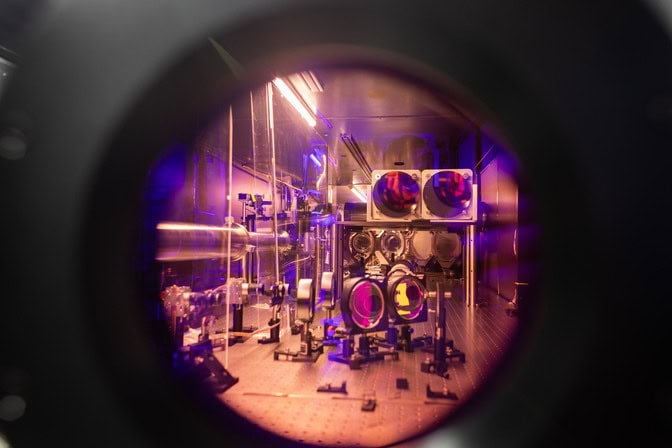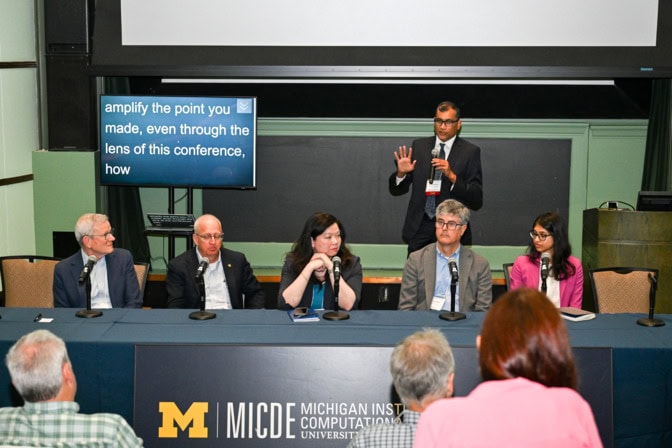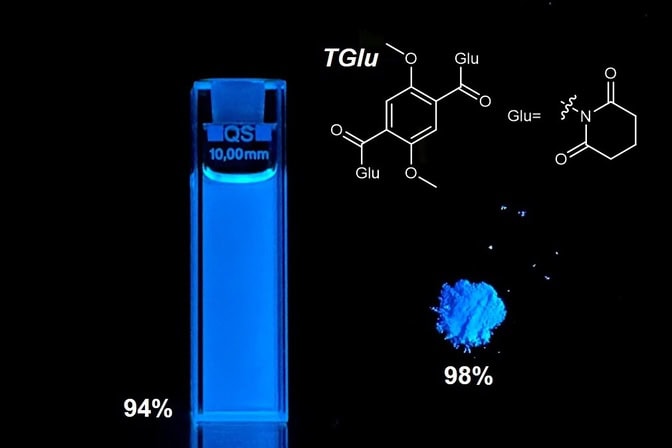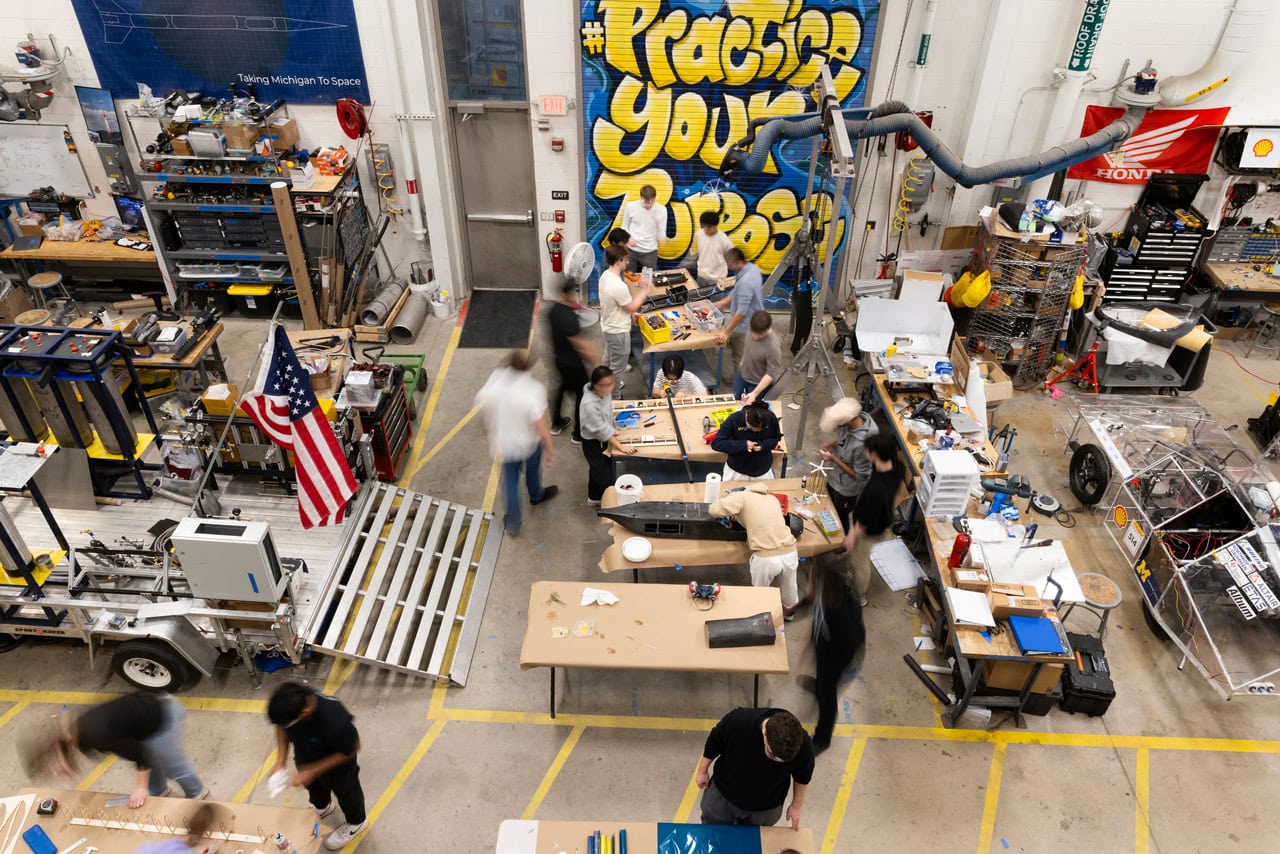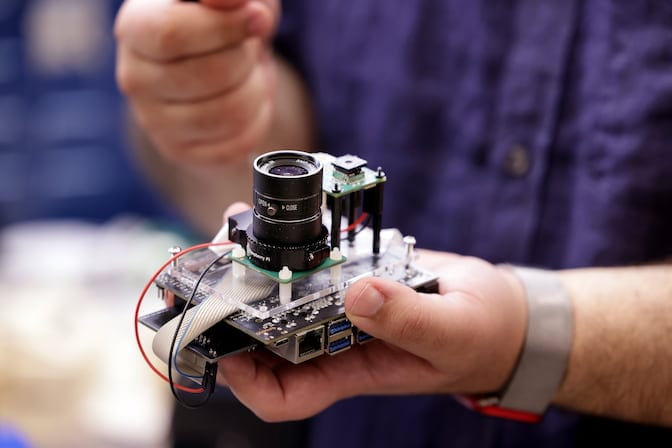-
The US has a new most powerful laser
Hitting 2 petawatts, the NSF-funded ZEUS facility at U-M enables research that could improve medicine, national security, materials science and more.
-
Conference: Scientific discovery in the age of AI
Experts from academia, industry and government discussed the growing utility of generative AI in science and what’s coming next.
-
New blue fluorophore breaks efficiency records in both solids and solutions
Reaching 98% efficiency in a solid state and 94% in solution, the small fluorescent molecule’s design could cut down development…
Featured Topics
Campus & Community
-
Student-designed engine for future two-story rocket passes final engineering milestone
As they gear up for launch in 2026, students on Michigan Engineering’s rocketry project team headed to California to test an engine designed and built from scratch.
-
Karen A. Thole receives prestigious award from ASME
The Kate Gleason Award recognizes distinguished women in engineering for outstanding entrepreneurial success or a lifetime of achievement.
-
Precision in Motion
Bridging Engineering and Gymnastics
-
Twelve faculty members earn named professorships this year
Michigan Engineering faculty recognized for their exceptional achievements.
In the News
New York Times
The Conversation
Wall Street Journal
Research
-
US high schoolers monitor solar storms with an accessible antenna kit
-
How to revive American shipbuilding: A Q&A with Matthew Collette
-
Stealthy ship hull cuts through waves like butter
-
First quantum-mechanical model of quasicrystals reveals why they exist
-
Using GenAI without hindering learning: Students want guidance
-
Waymo co-CEO Dmitri Dolgov discusses “prescience and patience”
-
Next-gen automotive semiconductors are critical for level 5 driverless cars
-
‘Millennium’ solar car to race in U-M team’s first Australian winter
-
Efficiency upgrade for OLED screens: A route to blue PHOLED longevity
-
A rule-breaking, colorful silicone that could conduct electricity
-
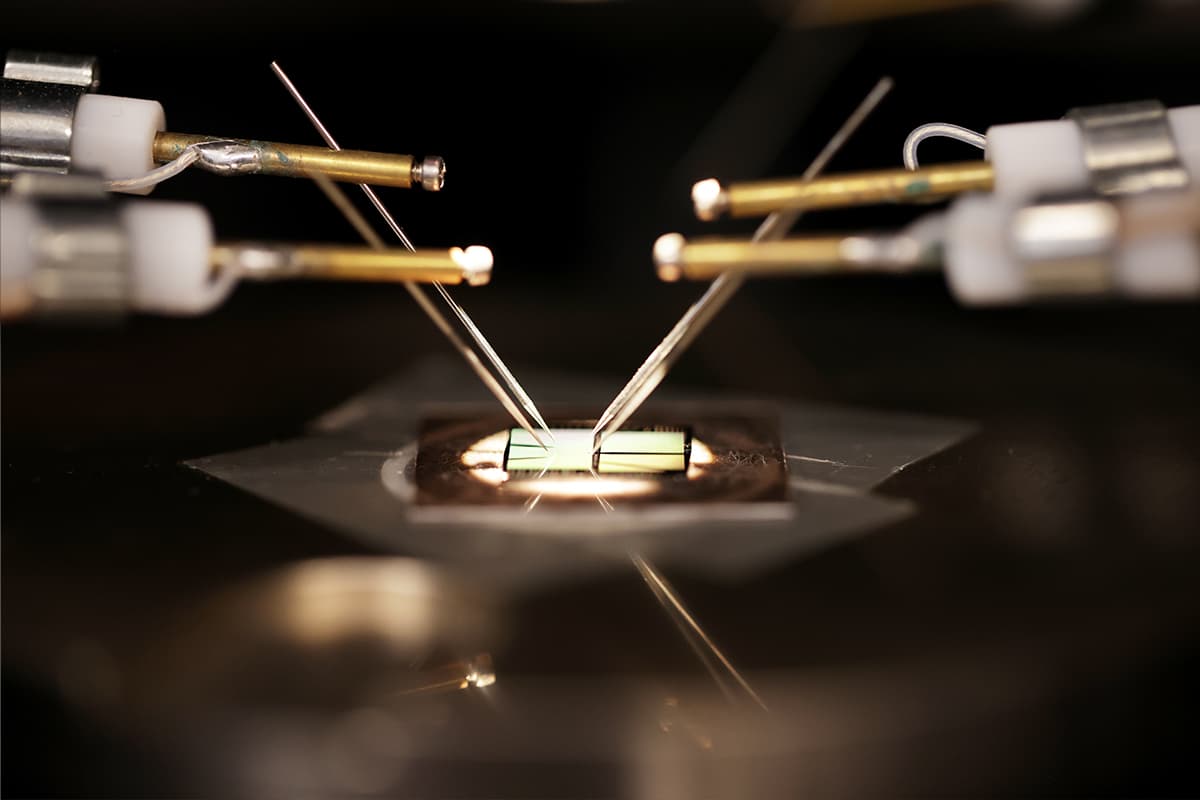
Features
Autonomy from the inside out
A look at the next-gen semiconductors we need to power tomorrow’s fully self-driving vehicles
